Let's shoot the moon! Here's how to get the best picture during supermoon summer
There is something magical about the moon.
OK, yes, it's a dead chunk of rock whipping around the Earth, possibly knocked out of the Earth's crust during a planetary collision a very long time ago. But the view from down here as it waxes and wanes and reflects the sunlight in a bright, silvery glow has delighted lovers, space fans and photographers for many years. Also, there's the whole "a major factor in making life on Earth possible" thing.
Just about anyone with a camera — and these days that's all of us — have tried taking a photo of the moon, with mixed results.
It's time to practice! This summer we have a rare occurrence: four supermoons in a row. Supermoons are what it's called when a full moon happens as the moon is the closest to the Earth in its oval orbit. There are usually three or four of those a year, but four of them one after the other, is extremely unusual. The next one is happening Tuesday but it will still look full for a few days and if you miss that one, there will be another one Wednesday, Aug. 30.
So get your cameras (or phones) ready! Here are some tips.
1. Have a plan
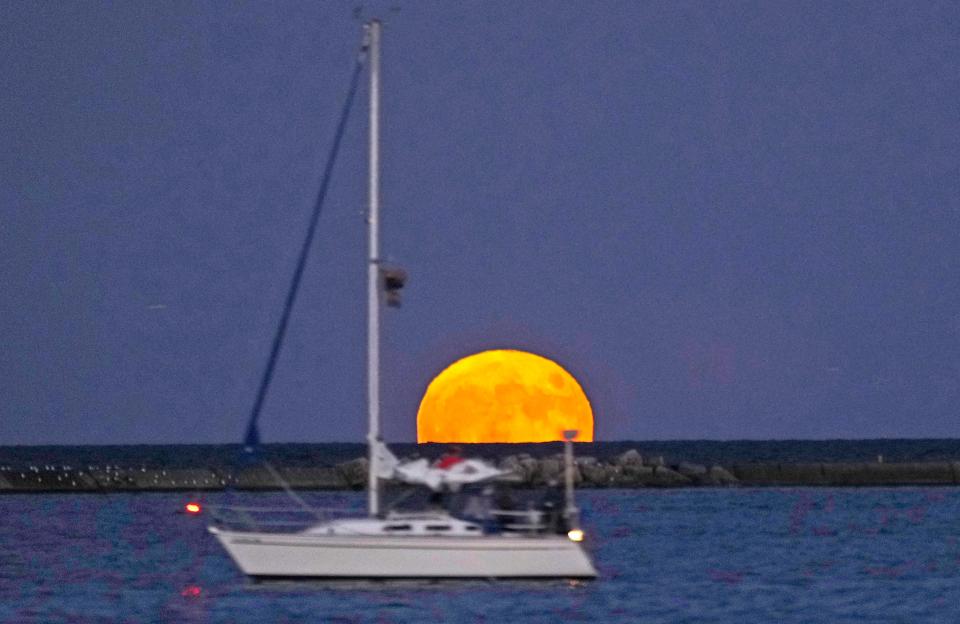
Do you want a close-up picture of the moon? Just step outside and find it.
Or would you like a wide shot, maybe with some amazing landscape or notable landmark in the shot? Supermoons often look dramatic behind the tops of skylines or behind trees and statues, or mirrored on water. A supermoon can appear to be up to 8% larger and 16% brighter than a regular full moon, according to the Farmer's Almanac, due to its proximity, and that can look amazing with other objects or places in the picture to show its scale.
If it's the second one, plan your shot. Know where the moon will rise and roughly where it will be when it does. There are a variety of places to find out. Most weather sites and apps will include moonrise times. The Moon Light World Map will show you exactly where the moon is visible. Astronomy apps such as SkySafari can pinpoint its location for you and tell you just what to expect.
2. Get up early
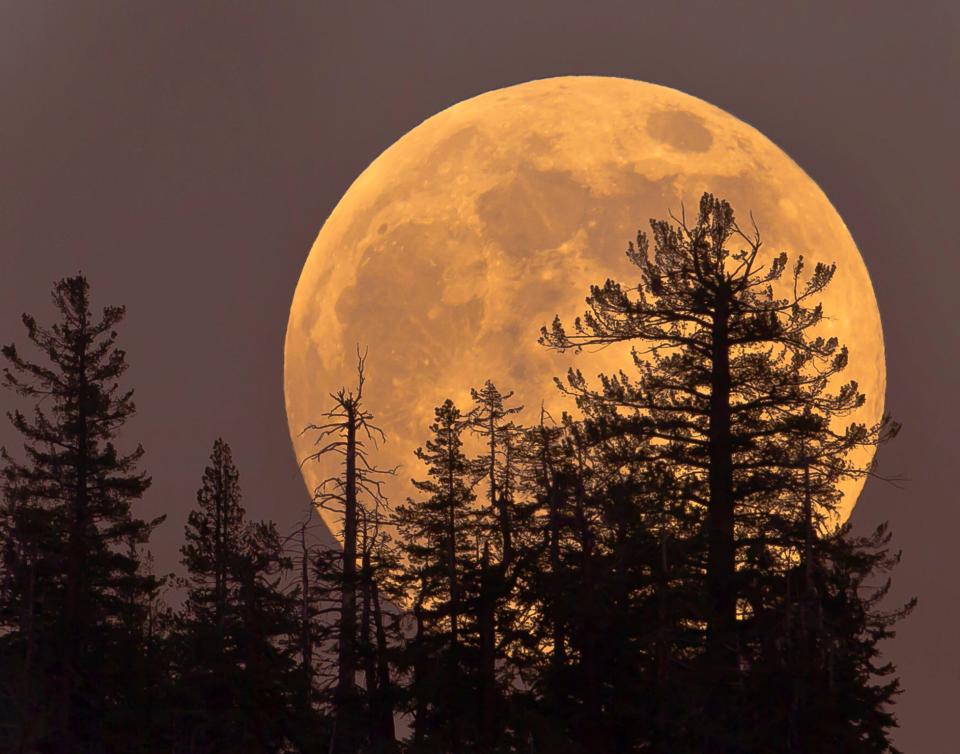
The best times to shoot a supermoon picture are at moonrise and moonset, at the golden hours of dawn and dusk when the moon will look its largest and will often have a soft golden glow. The easiest times are at moonset since it'll be visible and you'll have plenty of time to track it as it descends and line up your shot rather than take a chance on being surprised if it doesn't rise right behind the church tower you're focusing on.
On Aug. 1, moonrise is at 8:33 p.m. EDT and moonset is 6:21 a.m. Aug. 2.
3. Use optical zoom
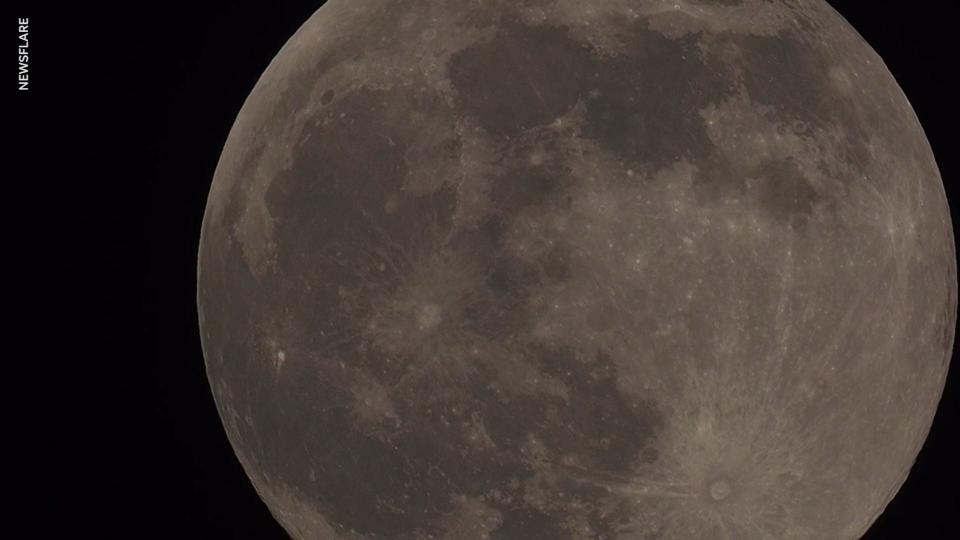
A supermoon is closer to us than most full moons, but it's still 222,159 miles away. You're going to want a zoom lens.
If you're using a camera, which is the best way to get clear shots, you'll want a telephoto lens like a 400mm, 500mm or 600mm, the types pros use to shoot sports. But those tend to be pricy so use what you have. You can get teleconverters to artificially boost your camera's zoom if budget is an issue. If you plan on a landscape shot that includes the moon, you can use your regular lenses.
If you're shooting on your phone and it has a zoom lens, use that. DO NOT pinch to zoom. That doesn't actually zoom, it crops your photo to look like a zoom but it doesn't add any detail and will make your image look muddier. There are also clip-on zoom lenses and zoom-lens phone cases you can try to improve your range.
4. Brace yourself and get stable
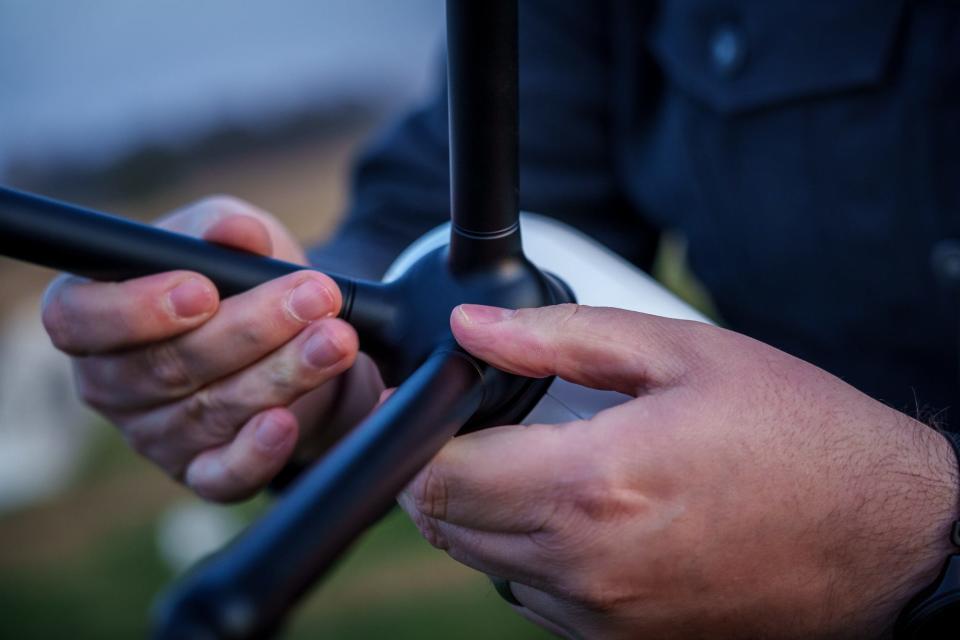
You're going to be shooting with a long exposure so keeping your camera steady is vital.
Ideally, get a tripod for your phone or camera so you can shoot without wobbling. If you have a remote shutter trigger device or app, so much the better, otherwise use the timer on your camera so it will shoot without you having to touch and potentially nudge it. Timers work on phone cameras as well, and if you have an iPhone and an Apple Watch you can trigger the phone camera from your wrist.
If a tripod isn't available set your camera or phone on a sturdy surface to brace it as much as you can and use the timer, then hold it very still. And if even that's not available, hold it with both hands and brace your elbows against your abdomen or lean against a wall or post to steady yourself as much as possible. If the moon is high you might even be able to lie down and brace your elbows on the ground.
5. Shoot RAW
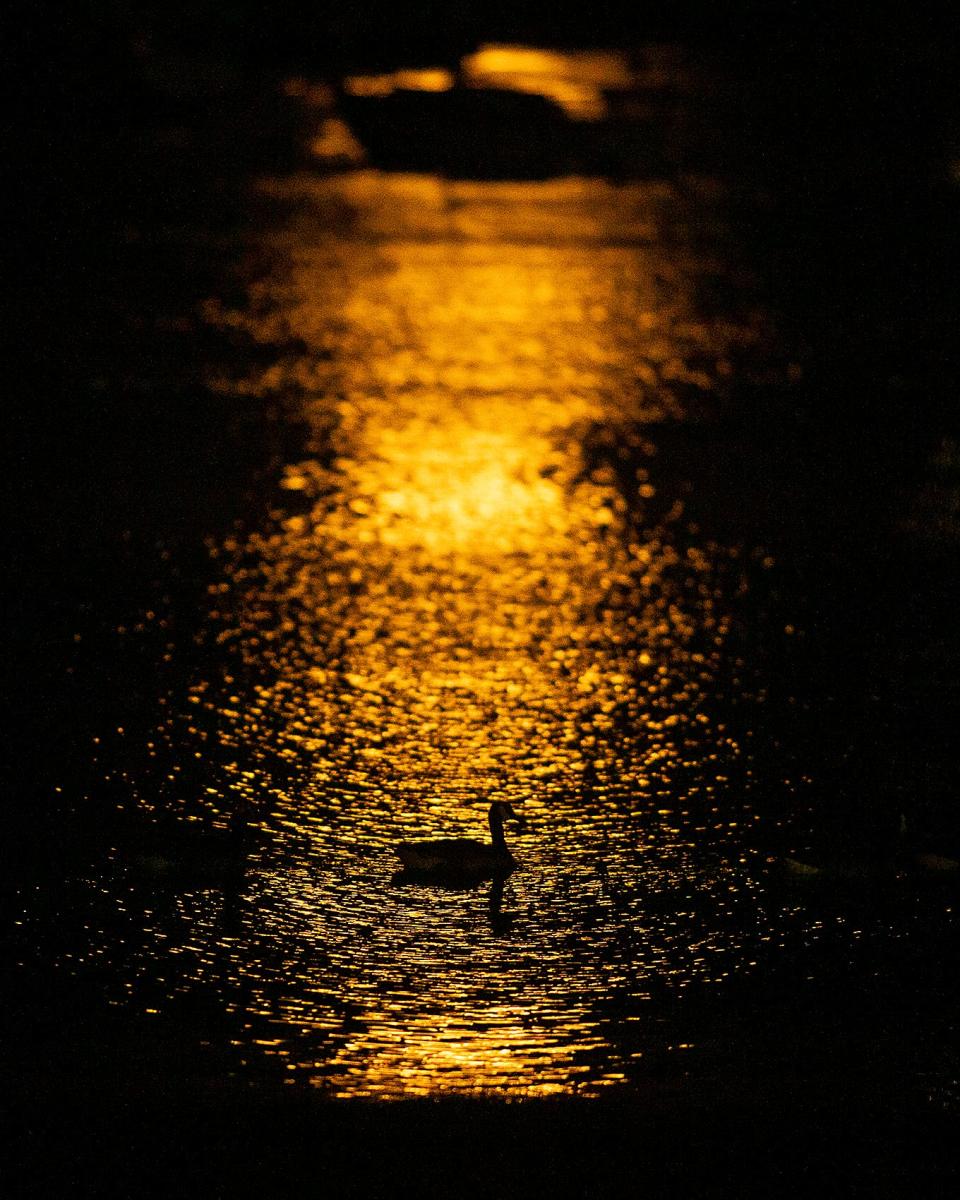
Normally a non-professional camera or phone will shoot photos and automatically convert them to the JPG format, which is processed and compressed on the fly to keep the file size down. But it also means you lose some detail. It's not usually a problem for most photos and you may never notice, but when you're shooting the moon you want every bit of detail you can get. That means shooting in RAW.
A RAW file is an uncompressed and unprocessed file that captures everything you're seeing through your viewfinder. RAW files are much larger than JPGs, but after you import them into photo editing software and process them you can get much better photos that you can then export into JPGs for sharing. Check your camera's instructions to see how to change the settings to RAW. Most cameras allow you to shoot RAW+JPG so you get both right away.
If your phone is new enough, you can shoot RAW files there as well. In the iPhone Pro and Pro Max series after iPhone 12, you can change your phone's settings to shoot in Apple ProRAW. Go to Settings > Camera > Formats, and turn on Apple ProRAW. You also can change resolutions to either 12 MP or 48 MP. If you have an Android phone check your phone's instructions to see if you change the format to RAW in quick settings at the top of the camera interface or in the camera settings.
RAW photos will initially look dull and desaturated. But after you shoot, open those files in a photo editing app and edit the exposure, color and white balance to get amazingly clear, detailed, colorful shots.
Be aware that these file sizes will be noticeably larger than the usual phone pics and can fill up your available memory fast.
6. Experiment with phone exposure and shutter speeds to get the right one for you
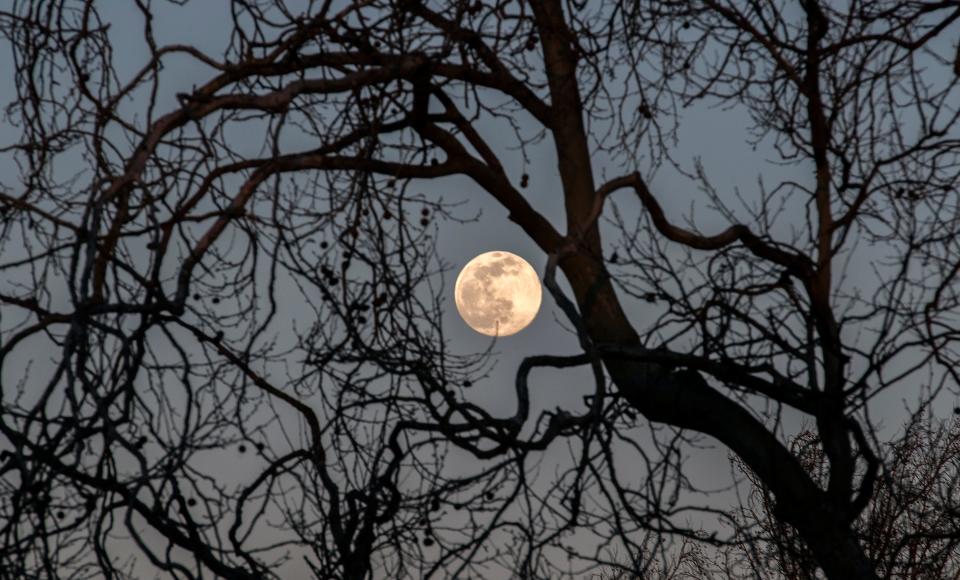
The moon will be very bright, which is the point, but that can make hitting the right camera settings tricky.
Your best bet will be to turn your ISO (lighting) down to 100 or 200 to limit the amount of light getting in, and then try a range of shutter speeds. Start with 1/60 and 1/125, then try one or two-minute shutter speeds, and see which one is closer to the effect you want. The great thing about digital cameras is you can see right away what's working and adjust for it.
On your phone, tap the moon to focus and then slide your finger up and down to change the exposure.
Keep in mind that the camera settings that give you the best moon detail may make the rest of the landscape too dark to see. You can use that to your advantage by taking shots with the moon against something that looks good in silhouette, like tree limbs and statues. If you have photo editing software like Photoshop that can combine HDR (high dynamic range) images, take a variety of exposures and combine them later to get a clear image.
iPhones use HDR automatically when they detect the need, but you can make it a manual option by going into Settings > Camera and turning off Smart HDR (after iPhone 11) or Auto HDR (iPhone 8, X). Then you can tap HDR on the camera screen whenever you want. When you snap the photo, the phone will quickly take three photos of different exposures and combine them, giving you the best exposure for every element of the shot.
Most Android phones also support HDR. Check your phone's manual, play an HDR video on YouTube and see if the quality setting includes HDR, or try the HDR Display Check app.
7. Capture the moon close to the horizon
Any moon shot can look cool, and supermoons are amazing, but when the moon is close to the horizon and near landmarks it can look absolutely huge and beautiful.
This article originally appeared on The Daytona Beach News-Journal: Supermoon photo tips to get great shots with a camera or a phone

